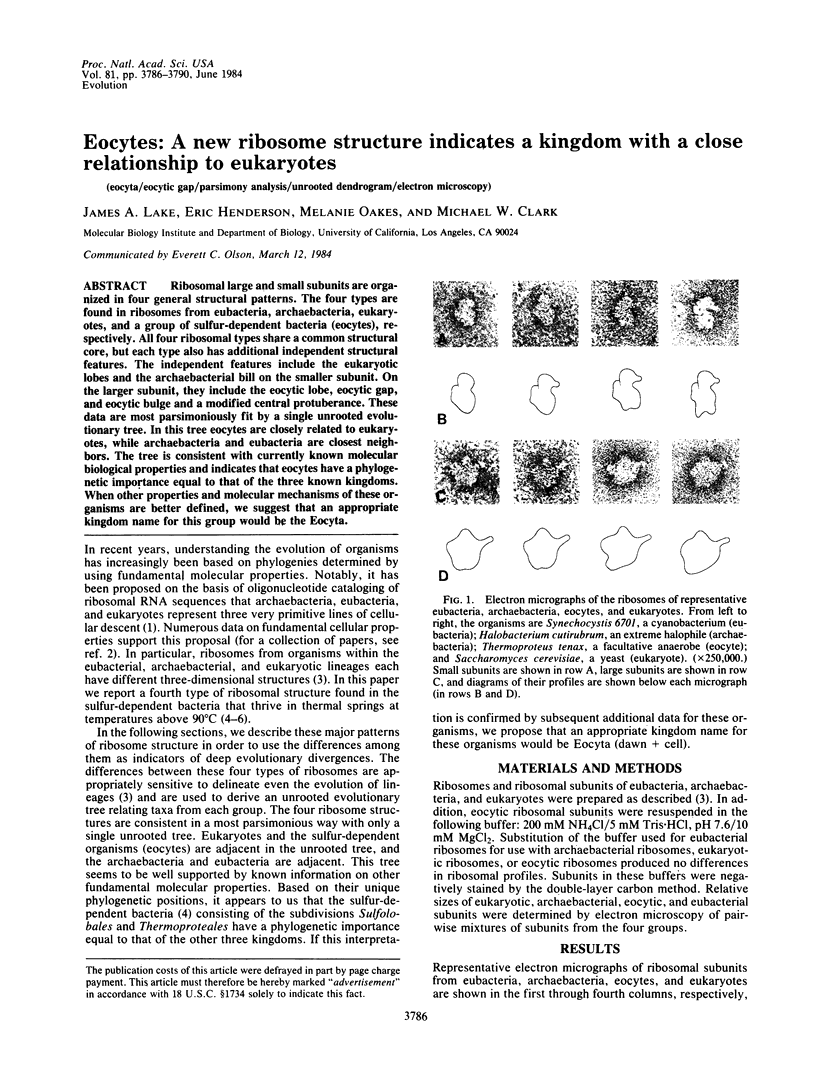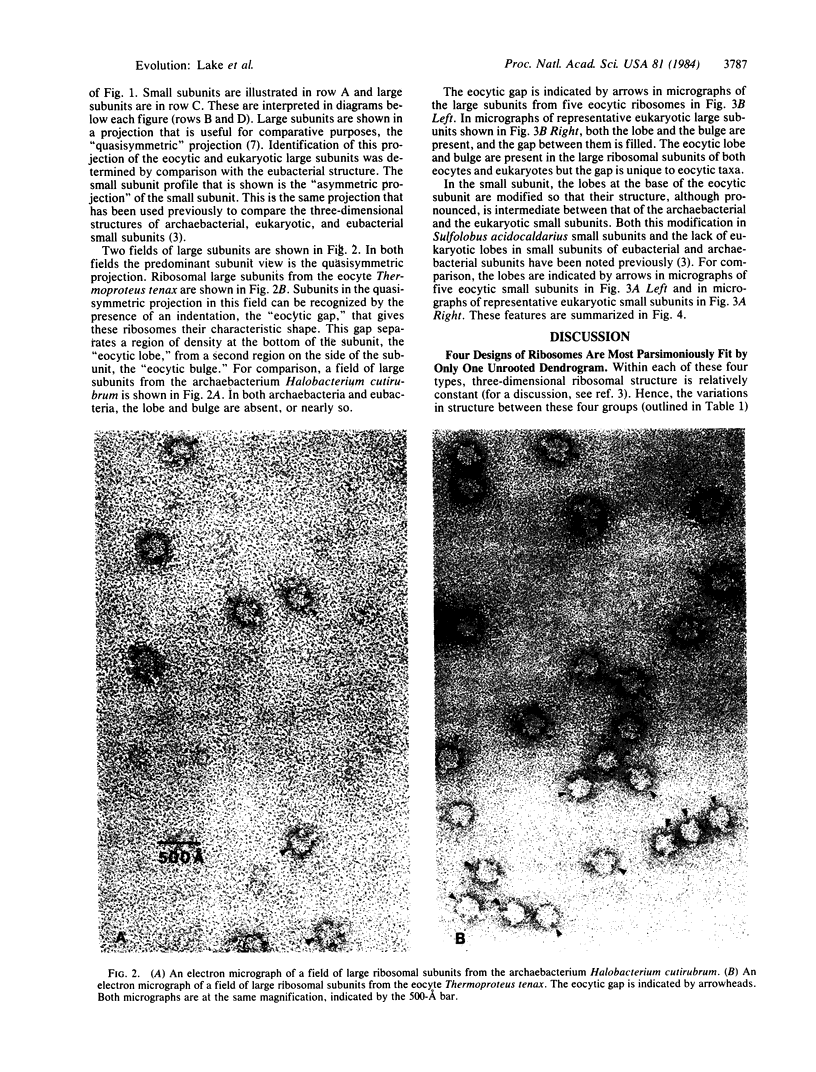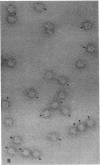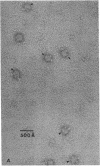Abstract
Ribosomal large and small subunits are organized in four general structural patterns. The four types are found in ribosomes from eubacteria, archaebacteria, eukaryotes, and a group of sulfur-dependent bacteria ( eocytes ), respectively. All four ribosomal types share a common structural core, but each type also has additional independent structural features. The independent features include the eukaryotic lobes and the archaebacterial bill on the smaller subunit. On the larger subunit, they include the eocytic lobe, eocytic gap, and eocytic bulge and a modified central protuberance. These data are most parsimoniously fit by a single unrooted evolutionary tree. In this tree eocytes are closely related to eukaryotes, while archaebacteria and eubacteria are closest neighbors. The tree is consistent with currently known molecular biological properties and indicates that eocytes have a phylogenetic importance equal to that of the three known kingdoms. When other properties and molecular mechanisms of these organisms are better defined, we suggest that an appropriate kingdom name for this group would be the Eocyta .
Full text
PDF




Images in this article
Selected References
These references are in PubMed. This may not be the complete list of references from this article.
- Darnell J. E., Jr Implications of RNA-RNA splicing in evolution of eukaryotic cells. Science. 1978 Dec 22;202(4374):1257–1260. doi: 10.1126/science.364651. [DOI] [PubMed] [Google Scholar]
- Fischer F., Zillig W., Stetter K. O., Schreiber G. Chemolithoautotrophic metabolism of anaerobic extremely thermophilic archaebacteria. Nature. 1983 Feb 10;301(5900):511–513. doi: 10.1038/301511a0. [DOI] [PubMed] [Google Scholar]
- Henderson E., Pierson B. K., Lake J. A. Chloroflexus aurantiacus has 30S ribosomal subunits of the eubacterial type. J Bacteriol. 1983 Aug;155(2):900–902. doi: 10.1128/jb.155.2.900-902.1983. [DOI] [PMC free article] [PubMed] [Google Scholar]
- Kaine B. P., Gupta R., Woese C. R. Putative introns in tRNA genes of prokaryotes. Proc Natl Acad Sci U S A. 1983 Jun;80(11):3309–3312. doi: 10.1073/pnas.80.11.3309. [DOI] [PMC free article] [PubMed] [Google Scholar]
- Kuchino Y., Ihara M., Yabusaki Y., Nishimura S. Initiator tRNAs from archaebacteria show common unique sequence characteristics. Nature. 1982 Aug 12;298(5875):684–685. doi: 10.1038/298684a0. [DOI] [PubMed] [Google Scholar]
- Lake J. A., Henderson E., Clark M. W., Matheson A. T. Mapping evolution with ribosome structure: intralineage constancy and interlineage variation. Proc Natl Acad Sci U S A. 1982 Oct;79(19):5948–5952. doi: 10.1073/pnas.79.19.5948. [DOI] [PMC free article] [PubMed] [Google Scholar]
- Lake J. A. The ribosome. Sci Am. 1981 Aug;245(2):84–97. doi: 10.1038/scientificamerican0881-84. [DOI] [PubMed] [Google Scholar]
- Marquis D. M., Fahnestock S. R., Henderson E., Woo D., Schwinge S., Clark M. W., Lake J. A. The L7/L12 stalk, a conserved feature of the prokaryotic ribosome, is attached to the large subunit through its N terminus. J Mol Biol. 1981 Jul 25;150(1):121–132. doi: 10.1016/0022-2836(81)90327-2. [DOI] [PubMed] [Google Scholar]
- Tu J. K., Prangishvilli D., Huber H., Wildgruber G., Zillig W., Stetter K. O. Taxonomic relations between archaebacteria including 6 novel genera examined by cross hybridization of DNAs and 16S rRNAs. J Mol Evol. 1982;18(2):109–114. doi: 10.1007/BF01810829. [DOI] [PubMed] [Google Scholar]
- Woese C. R., Fox G. E. Phylogenetic structure of the prokaryotic domain: the primary kingdoms. Proc Natl Acad Sci U S A. 1977 Nov;74(11):5088–5090. doi: 10.1073/pnas.74.11.5088. [DOI] [PMC free article] [PubMed] [Google Scholar]








